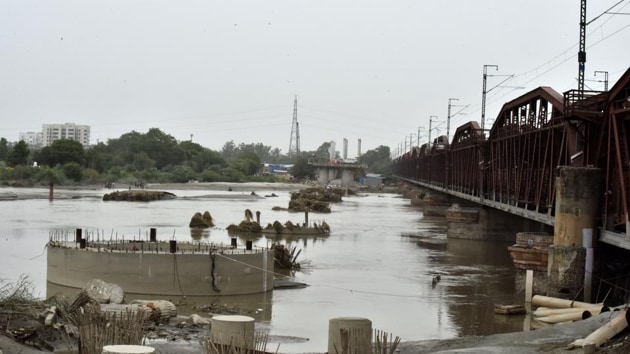Flooding beneficial in short term, harmful if it is prolonged: Experts
Experts said the large amount of untreated sewage, debris and industrial effluents emptying into it is what is harming it.
Even though water levels breaching the danger mark in the Yamuna is a cause of concern for those living along the floodplains, environmentalists and experts said such periodic flooding during the monsoon is the only way to revive the river, which otherwise resembles a drain. The situation may turn alarming only if the flood is prolonged, with incessant rains.

“Flooding is the natural cleansing process for a river. After the floods of 1964, embankments were erected along the Yamuna to not allow flood water to swell into the Ring Road. Delhi could face a problem only if the flood is prolonged and there are incessant rains. Under such situations, stormwater drains would get flooded and it would be difficult to drain out the water,” said Manu Bhatnagar, principal director, natural heritage division, INTACH, an NGO.
Strong water flow in the river helps rid it of pollutants, albeit temporarily. Flooding in a river is a natural phenomenon, which improves its ecology and also helps recharge groundwater, rejuvenate the floodplains by depositing silt and provides much-needed water storage for wetlands and surface water bodies, experts said.
“In Delhi, the river does not have a flow all through the year except for these periodic floods during the monsoon. This is the only time the river comes alive,” said Manoj Misra, environmental activist and convener of Yamuna Jiye Abhiyan (YJA).
Experts said the river receives 75% of its water during the four months of the monsoon season — July to October. Melting snow in the Himalayas accounts for only 25%-30% of the water, while the rest comes from the rains.
Water level touching the danger mark of 205.33 metres means the river is flowing in its channel. However, once the danger mark is breached, it means the water will start spreading to the floodplains, he said.
“The purpose of floodplains is to allow water during the flooding period to spread across and flow downstream safely. It is a signal for people living here to vacate the place. Ideally there must be no habitation in the O-zone area,” Misra said.
As per the Delhi Master Plan-2021, the O-zone area, which is the riverfront, is spread across about 9,700 hectares.

Stay updated with all top Cities including, Bengaluru, Delhi, Mumbai and more across India. Stay informed on the latest happenings in World News along with Delhi Election 2025 and Delhi Election Result 2025 Live, New Delhi Election Result Live, Kalkaji Election Result Live at Hindustan Times.
Stay updated with all top Cities including, Bengaluru, Delhi, Mumbai and more across India. Stay informed on the latest happenings in World News along with Delhi Election 2025 and Delhi Election Result 2025 Live, New Delhi Election Result Live, Kalkaji Election Result Live at Hindustan Times.





